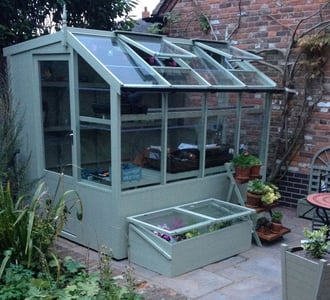Greenhouse Gardening Tips for Thriving Plants All Year Long
Greenhouse Gardening Tips for Thriving Plants All Year Long
Blog Article
Greenhouses for Beginners: What You Need to Know Before You Start
Greenhouse farming is one of the very most rewarding ways to develop flowers year-round, but it requires careful planning and methods to make certain success. With controlled conditions, you can foster plants aside from outside climate, but it requires the best techniques to create an ideal setting inside your greenhouse.Here are some important recommendations to simply help your plants succeed through the year.

Focus on Temperature Control
Sustaining the best temperature is critical for greenhousegardening. Flowers succeed in numerous temperature ranges depending on the form, so it's essential to check and modify temperatures accordingly. During colder months, buy reliable greenhouse heater or insulation systems to retain warmth. Use automated vents or fans in summertime to prevent overheating, as temperatures above 85°F may stress crops and stop their growth. Pairing these techniques with a simple thermometer allows you to keep a consistent environment.
Manage Humidity Levels
While greenhouses obviously maintain larger humidity levels, too much humidity may encourage form or form growth. For a wholesome balance, evaluate moisture regularly employing a hygrometer. Aim for approximately 50-70% general moisture, altering with proper ventilation techniques or a dehumidifier if needed. Moreover, space flowers precisely ensures better air circulation, reducing the chance of fungal diseases.
Choose the Right Plants
Not all plants are suited to greenhouses. To maximise generate and success, choose crops that arrange properly with the growing season and your greenhouse conditions. During colder weeks, grow crops like lettuce, kale, or broccoli, which thrive in a cooler environment. Warm-weather crops like tomatoes, cucumbers, and peppers flourish in the spring or summertime within larger temperatures. Pairing complementary plants also assists produce biodiversity and obviously deters pests.

Use Quality Soil and Fertilizers
The caliber of your land immediately affects plant growth. Choose a nutrient-rich soil combine specifically designed for greenhouse plants. Enrich your planting beds with natural matter like compost to boost fertility. Often feed your crops with fertilizers suited with their needs—some crops may possibly need large nitrogen for leafy growth, while the others flourish with potassium-rich mixes for fresh fruit development.
Practice Integrated Pest Management
Pests will get their way into also probably the most controlled greenhouses. Introduce helpful insects like ladybugs to focus on hazardous pests such as for instance aphids naturally. Inspect plants usually and remove any pests manually if noticed early. Contemplate normal or compound therapies as a last resource but use them moderately in order to avoid harming beneficial microorganisms and organisms.
Click here for more information please visit the site at www.greenhousestores.co.uk/ to get the knowledge about greenhouse. Report this page